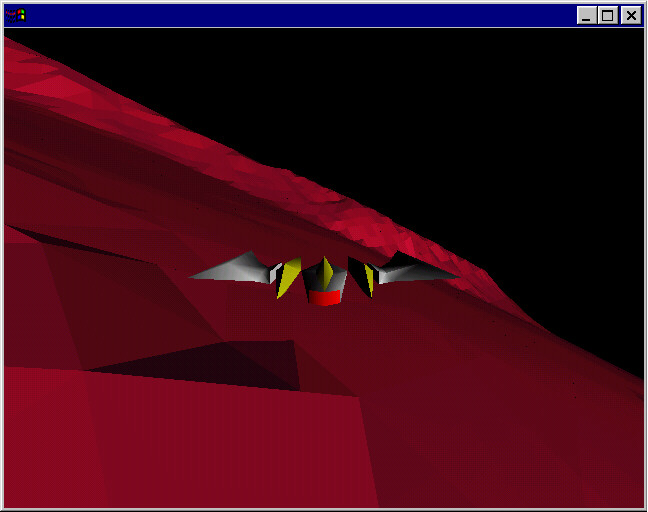Virtual Solar System Project
In collaboration with NASA
Ames and the University of West
Florida
Northwestern Principal Investigator: Kenneth D. Forbus
The goal of this project is to produce software that lets members of the public participate in simulated space activities. We hope that this will lead to a deeper understanding of the science and technology of space flight, and that such software will be useful for educators. The software we are producing includes components of a space probe activity and a shared virtual environment. The software is described below.
Virtual Space Probe
We would like to help people appreciate some of the science and technology underlying NASA's Deep Space One. With NASA Ames and the University of West Florida, we are creating a simulated spacecraft program that lets participants launch and control their own space mission. We expect this program to be publically available in a few months.
Northwestern's contribution to the project centers on the Principles of Operation manual for the simulated spacecraft. This hypertext is organized as an Ask System, and uses several self-explanatory simulators to provide activities for participants that focus on specific aspects of the domain. The explanations produced by the self-explanatory simulators link back into the explanatory hypertext. The baseline level of understanding assumed in the Principles of Operations manual is 8th grade science, although there is also a level of more advanced materal for those who want to go deeper. The current draft of this hypertext can be found here. You can download a local version for your Windows NT, 95, or 98 machines here. It is slightly smaller than 8MB.
In collaboration with teachers from the Chicago Public School system, we are using this Principles of Operation hypertext as part of a curriculum exploring the issues involved in designing an ecology for a Mars base. This curriculum development effort is being supported by the National Science Foundation Center for Learning Technologies in Urban Schools.
NeverWorld Three

Neverworld 3 Prototype: Avatar cruising over surface of Mars
Shared virtual environments provide new opportunities for exploring ideas collaboratively, whether for purposes of computational prototyping or for education. The NeverWorld series of shared virtual environments created at Northwestern are unique in their focus on 3D graphical worlds programmed in dynamic languages. Specifically, we use the Scheme programming language, a streamlined dialect of Lisp, which provides extraordinary power through its dynamic binding and memory mechanisms. Previous generations of Neverworld used VRML for 3D rendering and web browsers as clients. While useful for static imagery, VRML simply doesn't provide the facilities one needs for highly dynamic worlds. Neverworld 3 uses instead a 3D graphical layer built on top of DirectX (and soon, Open GL as well) that supports efficient 3D rendering with a distributed client-server model. We use KaliScheme to provide distributed computing, so that we can link simulators running on multiple machines together to create a scalable shared virtual world. Our goals for this software include:
- Computational prototyping. Enabling engineers to link up simulators of new vehicles and systems and try them out in a "virtual testing ground". Visual debugging of Rover programming is one potential application.
- Immersive visualization. Providing ways for scientists and members of the public to explore spatial data, e.g., Pathfinder data, in a shared space.
- Computer science education: Being able to write software that operates in rich multiuser worlds, e.g., multiplayer games, should provide more stimulating exercises and projects for undergraduate courses.
Released vesions of Neverworld 3 will be publically available in source form.